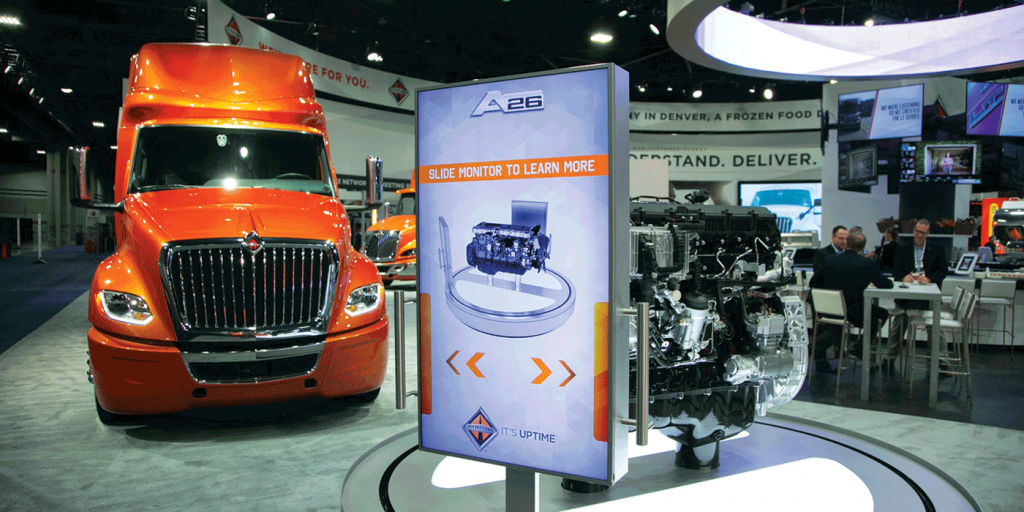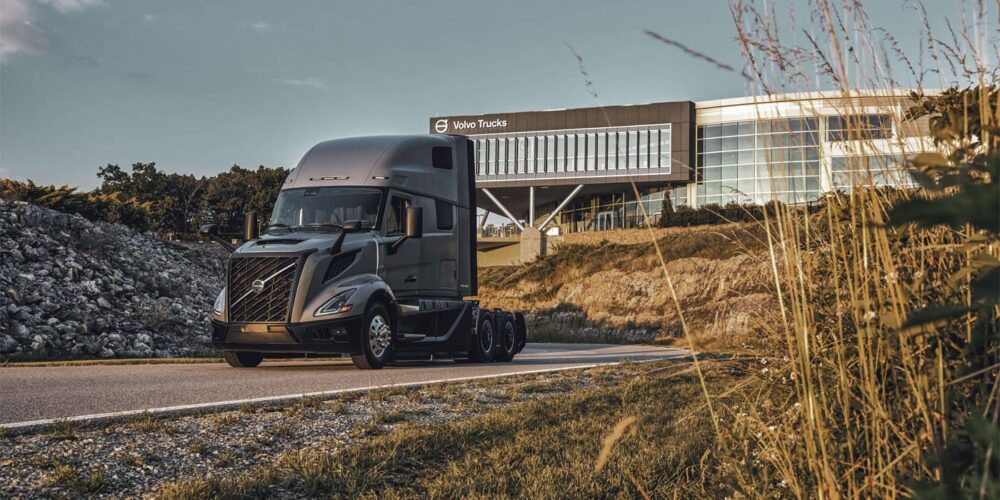The next era of Greenhouse Gas Emissions and Fuel Efficiency Standards is upon us, and 2021 model year diesel engines are held to increasingly stringent emissions standards. You could read the 797-page Phase 2 final rule (www.govinfo.gov/content/pkg/FR-2016-10-25/pdf/2016-21203.pdf) for all the laborious detail, but why spend all that time when you can take a couple minutes here to catch up on what you need to know going into model year 2021?
Ready? Here we go.
Didn’t we just go through a diesel engine GHG update?
We did! In 2017, engine manufacturers released a new generation of diesel engine to reduce CO2 emissions to 475 g/bhp-hr (which stands for grams per brake horsepower-hour) and fuel consumption 4.67 gal/100 bhp-hr. For model year 2021 diesel engines, that number is further reduced to 460 g/bhp-hr and fuel consumption reduced to 4.52 gal/100 bhp-hr.
What that boils down to is that diesel engine technology is greener and more efficient— but don’t think the innovation stops there. You can expect another diesel engine primer story in 2024 and then 2027 because Phase 2 has new standards dropping every three years. And it’s a good bet that there will be further standards after that.
So, where will we see the engine improvements?
Here’s Carl Hergart, director of powertrain and advanced engineering, PACCAR Technical Center, with the answer:
“When it comes to improving the engine, the efforts are focused in four main areas: combustion improvements; air management; friction reduction; and waste heat recovery.
Some of the technologies being explored to improve combustion efficiency include increased compression efficiency, optimized piston bowl geometry and spray targeting. It is also important to emphasize the need for proper system integration in order to maximize efficiency. The engine rating has to be carefully selected for the application, along with the transmission and rear axle ratio.”
Hence why engine, transmission and axle integration has been such a huge talking point since the first round of Phase 2 regulations started rolling in 2014.
“With continued pressure to reduce emissions, increase fuel efficiency and improve vehicle connectivity, it is becoming more and more critical for powertrain components to communicate and interact seamlessly,” agreed Brian Daniels, manager, Detroit Powertrain and Component Product Marketing.
(See our sidebar: Futuristic engine offerings for a look at what each engine OEM is offering in model year 2021.)
We’re talking about more than just the engine?
Yep. Integration is key to continue driving down emissions and improve fuel economy.
“The 2021 EPA regulations encourage higher take rates of automated manual transmissions [AMT],” said Jim Nachtman, heavy-duty marketing director, Navistar. “An AMT allows the engine and transmission to be optimally matched for torque output and shifting. Integrating these components, as well as rear axle ratios, allow International to provide the optimal combinations to customers.”
Downspeeding is a prime example of the importance of integration between the engine, transmission and axle. Running at a lower cruising RPM means fuel efficiency savings and reduced emissions. According to John Moore, product marketing manager at Volvo Trucks North America, “It’s absolutely crucial to have an AMT behind an engine when you downspeed to save fuel.
“Without it,” he continued, “you’ve got a driver with a manual transmission combined with a really fast rear axle ratio, so wherever loads on the engine are incurred due to grades, wind, etc., there is a greater chance for a downshift. Increased shifting lowers driver productivity and acceptance.”
“Advanced predictive features such as neutral coast and even engine-off coast provide additional fuel efficiency benefits,” Hergart said adding to the list of deep integration benefits. “These technologies have to be carefully integrated in order to ensure acceptable drivability.”
Of course it’s technology related, Fleet Equipment editor who won’t stop writing about it.
Nevertheless, it’s the electronic control of the entire powertrain that enables a huge chunk of reduced emissions and increased fuel economy benefits.
“Engine control technology is another place where you can save fuel,” Moore confirmed. “Optimizing injector control to work in concert with transmission shift points to negotiate different scenarios of load placed on the engine saves fuel. Control technology can be modified based on customer preference to allow or disallow performance when unnecessary like in a bobtail or empty trailer application, or cresting hills for example.”
“We can also tailor cruise droop on grades to slow down a few miles per hour before the crest utilizing momentum and negative grade to reach the road speed limit again. Over time fuel savings add up. Control software also utilizes peak torque as much as possible to maintain speed while at simultaneously it’s ready to downshift when momentum is paramount.”
“At the same time, we have to deliver a working truck for the driver, and it’s important to deliver a vehicle that not only provides fuel efficiency, but performance as well.”
Detroit, PACCAR, Volvo Trucks North America and Mack Trucks all offer proprietary engine and transmission integrations (with DTNA and PACCAR also offering propriety axles within those configurations). Every OEM and supplier is keenly aware of the importance of integration.
“With the variety of applications and uses of our engines, we certify to meet the GHG standards in order to have a product available to our customers across all markets,” said Kris Ptasznik, Cummins heavy-duty product manager. In 2017, the Eaton Cummins Automated Transmission Technologies joint venture was created to deepen integration between Cummins engines and Eaton transmissions, which introduced its Endurant 12-speed automated transmission that paired with the Cummins X15 Efficiency Series engine. But the truck name plate-agnostic engine supplier noted that it seeks the deepest level of integration possible with all the transmissions with which it is mated. “The Eaton Cummins joint venture portfolio is certainly the most obvious, but we also pair with standard manual and Allison automatic transmissions, depending on your engine selection.”
In International’s case, A26 engine optimization within its MPG Powertrain Packages show how the OEM combines efficient engine ratings, transmission, rear axle, rear axle ratio and many more features to maximize fuel efficiency, the company notes.
With increasing emissions regulations pressure and the development of electric trucks, where does this leave the development of diesel engines?
“Diesel engines will continue to be the dominate power generator for the near future,” Cummins’ Ptasznik said, who then noted that investments continue in alternative power sources. “Cummins investments in alternative power are already here with all-electric options in certain applications such as school bus, and technology demonstrators like our hydrogen fuel cell powered truck.”
PACCAR’s Hergart echoed that outlook:
“Given today’s technology, a Class 8 line-haul application with 600-mile range would need a $250,000 battery pack weighing roughly 20,000 lbs. Even in the most optimistic electrification scenarios, internal combustion engines will power a majority of vehicles on the road in the 2040 timeframe. Between now and then, we are committed to developing the cleanest most efficient and durable engines ever built.”
“Our goal is to always have the right power for the right application,” Detroit’s Daniels said. “Diesel engines, with continued advancements in efficiency and performance, will continue to be a key powertrain solution for the foreseeable future. We are dedicated to providing a range of industry-leading powertrain options and innovative technologies, including battery electric vehicles, to meet the needs of our customers.”
Electric technology could potentially aid emission reductions efforts, according to Navistar’s Nachtman, but it’s no magic bullet.
“Electrification plays a role in two areas. Some diesel engine accessories that are currently belt driven can become driven by efficient electric motors, reducing the load on the engine. Fully electric vehicles, such as the eMV that International unveiled recently at NACV, will play a growing role in commercial vehicles,” he said. “But diesel engine fuel efficiency will continue to improve, and emissions will continue to be reduced.”
Volvo Trucks North America is on the eve of unveiling its electric VNR, but Moore, who looks forward to helping in the development of that technology, took a pragmatic approach:
“The fact is, diesel carries America and the world. Right now, diesel is the number one engine driveline, period.”














